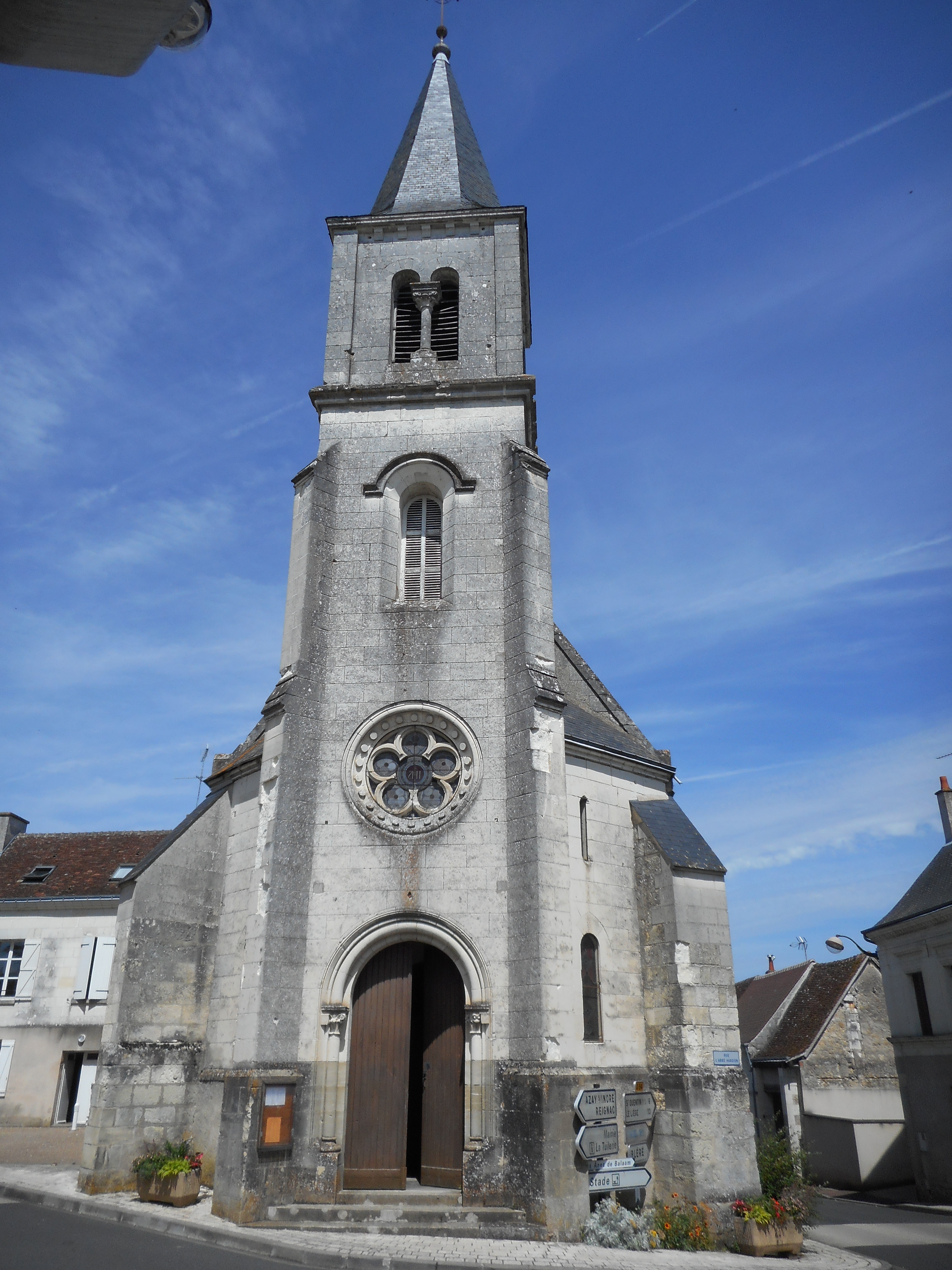La construction de l’église remonte au XIe ou XIIe siècle. Elle est composée d’une nef à laquelle furent ajoutées plus tard deux chapelles latérales. Du côté Sud, se trouve une porte romane, respectée par la restauration de l’édifice. Sur le mur méridional paraissent également deux des anciennes fenêtres en plein cintre, aujourd’hui condamnées. Le clocher, la couverture de la nef de voûte en briques et la réfection de la charpente datent de la fin du XXe siècle.
L’église abrite un vitrail de Lobin réalisé en 1878 qui représente une charité de saint Martin. Saint Martin est à cheval, vêtu en soldat romain, casqué et nimbé, en train de couper son manteau avec son épée. Le mendiant est assis, à demi-nu, tendant la main droite, la main gauche étant appuyée sur un bâton. un fardeau est à ses pieds. En arrière-plan, on voit les rempart d’Amiens. Les sol est couvert de neige. Au registre supérieur du vitrail, une main nimbée faisant le geste de bénédiction sort d’un nuage.
Un vitrail de la nef, réalisé par J. Fournier en 1896, figure une messe de saint Martin. Saint Martin est debout devant l’autel, en train de lever l’hostie. Il est vêtu d’une chasuble rouge par-dessus une dalmatique blanche. Il est entouré de quatre moines. Le moine vêtu d’une robe jaune tient une mitre, celui vêtu d’une robe verte tient une crosse, celui vêtu d’une robe violette tient un cierge allumé et celui vêtu d’une robe bleue tient une clochette. En-dessous de la scène est écrit Stus MARTINUS.
The construction of the church dates back to the 11th or 12th century. It consists of a nave to which two side chapels were later added. On the south side there is a Romanesque doorway, which was preserved during the restoration of the building. On the southern wall there are also two old round-headed windows, which are now closed. The bell tower, the roof of the brick vaulted nave and the repair of the roof structure date from the end of the 20th century.
The church has a stained glass window by Lobin, made in 1878, which represents a charity of Saint Martin. Saint Martin is on horseback, dressed as a Roman soldier, helmeted and nimbed, cutting his cloak with his sword. The beggar is seated, half naked, holding out his right hand, his left hand resting on a stick. A burden is at his feet. In the background, we see the ramparts of Amiens. The ground is covered with snow. In the upper register of the window, a nimbed hand making the gesture of blessing emerges from a cloud.
A stained glass window in the nave, made by J. Fournier in 1896, depicts a mass of Saint Martin. Saint Martin is standing before the altar, lifting the host. He is dressed in a red chasuble over a white dalmatic. He is surrounded by four monks. The monk in the yellow robe is holding a mitre, the one in the green robe is holding a crozier, the one in the purple robe is holding a lighted candle and the one in the blue robe is holding a bell. Below the scene is written Stus MARTINUS.

 "/>
"/>

